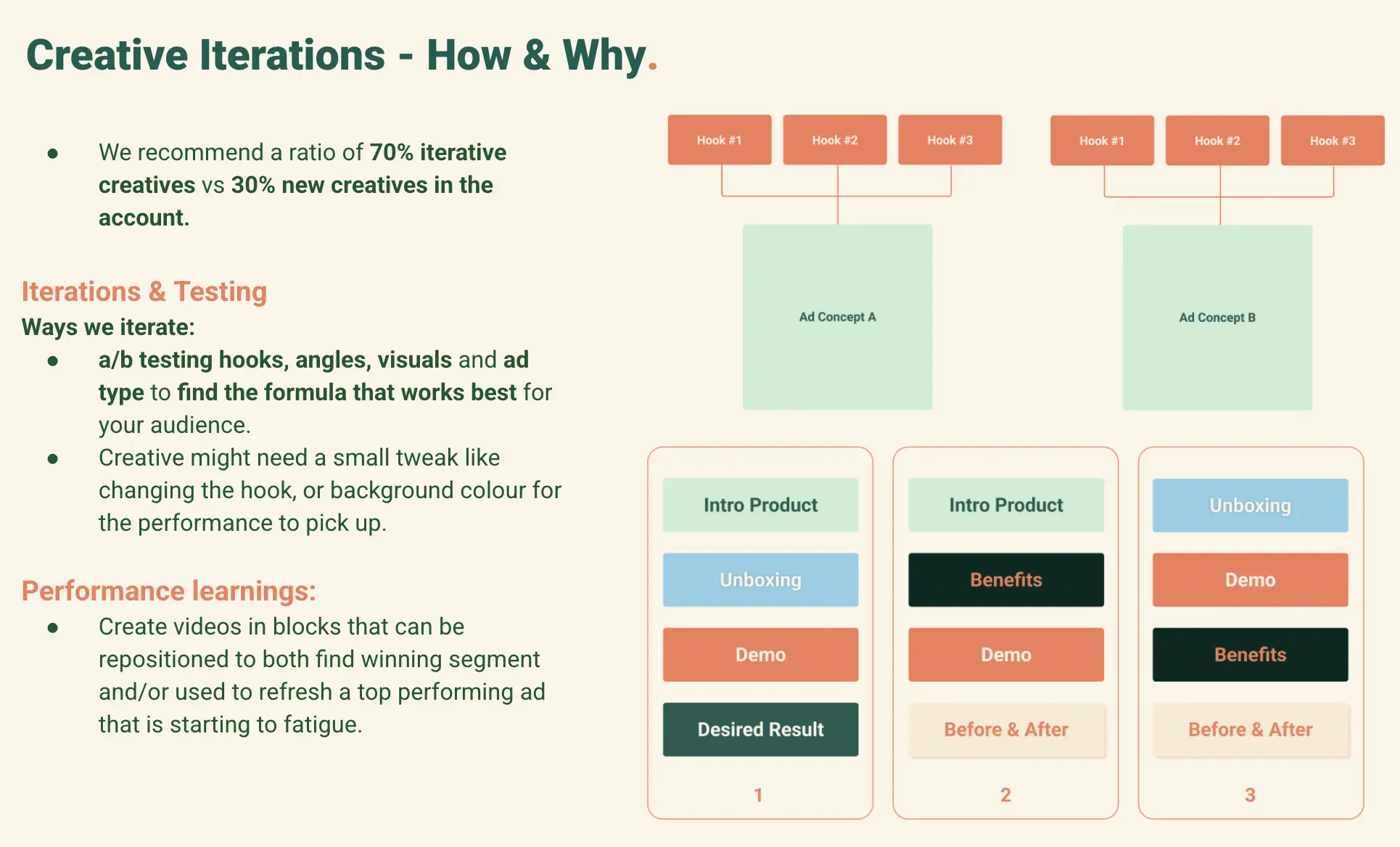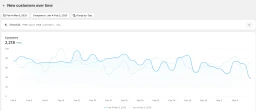
Scaling Paid Media: How to Break Through Your Ad Spend Ceiling
In performance marketing, one of the biggest challenges brands face is understanding the true effectiveness of their paid spend on acquiring new customers.
Spending more on paid ads but seeing flat revenue and declining efficiency? It’s a sign you’ve hit a ceiling, and your strategy needs a reset.
Scaling isn’t just about increasing budgets. It’s about spending smarter, refining your performance marketing approach and breaking through the hidden bottlenecks that hold businesses back.
Whether you’re running an eCommerce brand, tech company or anything in between, the same principles largely apply. You need the right measurement in place (both in and out of the platform) to inform your media mix, creative & audience strategies and budget distribution.
Without it, you’re driving in heavy fog. You’re moving forward but without clear visibility of what’s ahead or how to correct course.
Common Reasons Why Your Paid Media Has Stalled
1. Misaligned Measurement & Attribution
Platform ROAS is lying to you. Ad platforms over-report conversions, misattribute revenue, and hide inefficiencies, leading to wasted spend. This creates inefficiencies in your performance marketing spend.
I’m not saying ad platform data is not important, I’m just saying you shouldn’t rely on them solely when making scaling decisions.
If you’re not measuring the right way, you’re making bigger-picture budget optimisations blind. Instead of fixating on in-platform metrics, focus on business-level indicators like:
- aMER/MER (Acquisition Marketing Efficiency Ratio) – Your true return across all marketing spend.
How to calculate MER
- First-time customer acquisition – How many net new buyers are you bringing in?
- LTV:CAC ratio – Are you acquiring customers profitably for long-term growth?
If you aren’t tracking how your spending impacts actual business growth, you’re making decisions on flawed data.
The ad platforms should help guide optimisations within the platform, but your decisions on scaling and budget distribution across your channels should be made from the business level.
2. Over-Saturating Existing Audiences & Neglecting First-Time Customers
A huge mistake brands make is spending too much on retargeting and repeat buyers rather than bringing in new customers.
Paid media should be geared towards driving new demand. If you’re spending less than 70% of your performance marketing budget on first-time customer acquisition, you’re likely capping your long-term growth.
Shifting your budget toward new audiences means:
- Expanding your customer base instead of over-serving the same people.
- Strengthening your LTV pipeline by acquiring the right customers upfront.cr
- Future-proofing your business instead of relying on short-term wins.
New Customer Report
3. Over-Reliance on Paid Media
Paid media is a powerful growth engine, but it shouldn’t be your only growth engine.
One of the biggest mistakes we see brands make is becoming too dependent on paid acquisition, treating it as their sole driver of revenue instead of part of a broader, balanced strategy.
Paid media is rented attention. Stop paying, traffic stops. CPCs rise, margins shrink. If paid is your only growth engine, you’re one algorithm change away from a freefall.
Brands that scale sustainably don’t just rely on ads. They focus on building owned channels in tandem with paid to improve efficiency. That means:
- Investing in first-party data – Collecting and leveraging email/SMS lists so you’re not dependent on third-party platforms.
- Building a strong brand presence beyond ads – This means engaging with your audience, fostering a loyal community on social media, and creating content that adds value, not just sells. Brands that cultivate a real following have stronger organic reach, higher customer retention, and more word-of-mouth sales.
- Investing in SEO – The more traffic you can drive from search that you don’t have to pay for, the better.
- Optimising for repeat purchases – If you’re only focused on acquiring new customers without a post-purchase retention strategy, your CAC will keep rising without an offsetting increase in LTV.
- Leveraging social proof at scale – Gaining reviews on key platforms like Trustpilot, Capterra, Google Reviews, and product pages builds credibility and reduces friction in the buying journey. If prospects see real customers vouching for you, they’ll trust your brand before they even land on your site.
The brands that win gain valuable leverage in the market by building traffic/revenue from other ‘free’ sources so they can accept lower marketing efficiency from paid to help fuel growth.
4. Over-Reliance on a Single Paid Media Channel
If 80%+ of your budget is going to just Meta or Google, you’re setting yourself up for risk. Algorithm shifts, rising CPCs, new competition and a lot more can tank performance.
Brands that scale effectively diversify without diluting performance. That means testing:
- Google Shopping & Performance Max to capture high-intent buyers.
- TikTok & YouTube for mid-funnel engagement.
- Email & SMS to improve retention (which unlocks more budget for paid).
Expansion doesn’t mean throwing money at new platforms, it means strategic testing to unlock new revenue streams. Again, when opening up new channels, it’s imperative to have the right measurement signals in place to ensure that MER/CAC maintains or ideally improves.
5. No Proper Creative Testing Framework
A lot of brands treat creative as a one-and-done process rather than a structured, scalable system.
But if done correctly, it’s one of the most powerful performance levers in paid media. If not, it’s equally a strong barrier to your growth.
We take a data-backed approach to creative testing, ensuring that every ad we produce is built on insights, not assumptions.
We use Motion to analyse ad performance across the entire account, identifying top-performing hooks, formats, and messaging styles. We also leverage Foreplay to gather inspiration from both inside and outside the category, helping us stay ahead of creative trends.
From there, we follow the 70/30 rule:
- 70% of our creative production focuses on iterating top-performing ads. Small refinements that squeeze more performance from proven winners.
- 30% is dedicated to testing new creative concepts, allowing us to discover fresh angles before fatigue sets in.

Creative Iterations
We also tailor testing to each funnel stage, whether it’s capturing attention at TOF, building trust at MOF, or driving conversions at BOF. This ensures that every ad speaks to the right audience mindset at the right time.
Rather than constantly chasing the next big idea, our structured approach allows us to scale performance sustainably, proactively refreshing creative, not reactively
6. Dominating One Market but Failing to Break into Micro-Markets
Many brands do a great job of winning in one core market or audience segment but struggle to break into new micro-markets.
This often happens because they assume what worked for their initial audience will work everywhere. But just because you’ve scaled in one segment doesn’t mean you’ve unlocked all the demand available to you.
Micro-markets aren’t just geographic expansions (but they also can be), they exist within your current customer base in the form of subcultures, niche interests, and different personas that require tailored messaging to convert.
For example:
- An apparel brand that’s winning with Gen Z streetwear fans but hasn’t spoken to the premium, minimalist fashion market that also aligns with its aesthetic.
- A fitness supplement brand dominates the weightlifting community but hasn’t positioned itself for runners, endurance athletes, or wellness-conscious consumers.
The issue isn’t just reaching these audiences, it’s understanding how they see the world and what makes them buy. Too many brands run broad campaigns, assuming everyone would react the same way. But micro-markets need messaging that feels personal, relevant, and aligned with their mindset.
7. No Clear Differentiation or Positioning
One of the biggest mistakes brands make is assuming their audience already knows who they are and why they’re great. They write ads like they’re Coca-Cola, expecting consumers to recognise their brand instantly, understand their value, and already care.
But in reality?
Most people don’t know you. They don’t care (yet). And they won’t take the time to figure out what makes you different unless you tell them, clearly and convincingly.
Too often, brands talk about themselves in vague, high-level ways that don’t communicate any real reason to buy. Saying things like “Premium quality. Ethically made. The best in the industry.” means nothing unless you prove it with specifics.
If your ads and landing pages don’t immediately answer “Why should I buy from you instead of someone else?”, you’re forcing customers to make their decision based on price, which is the fastest way to erode your margins and stall growth.
At its core, strong differentiation comes down to:
- Speaking directly to customer pain points, not just product features. Instead of “Made from 100% organic cotton,” say “Ultra-soft, breathable fabric that keeps you cool on the hottest days.”
- Showing, not just telling. Use real reviews, UGC, and proof points to back up your claims. Anyone can say they have the best product but let your customers say it for you.
- Owning a unique position in the market. If every competitor is pushing sustainability, find another angle, whether it’s durability, performance, craftsmanship, or community impact.
If you’re not actively controlling how your brand is perceived, your competitors (or worse, price comparison sites) will do it for you.
And that’s not a game you want to play.
8. Slow or Ineffective Landing Pages
A killer ad won’t save a bad website experience. You can have the best creative, the perfect targeting, and a strong offer, but if your landing page loads slowly, feels clunky, or doesn’t align with the ad message, your conversion rates will suffer.
The best media strategy in the world can only do so much if the user’s post-click experience doesn’t match their expectations. A high-performing funnel requires seamless alignment between ads and landing pages, ensuring that:
- Pages load in under 3 seconds – Speed matters. Every second of delay reduces conversions and increases bounce rates.
- The landing page mirrors the ad promise – If your ad highlights a discount or unique benefit, it should be immediately visible on the page.
- The design is distraction-free – Too much clutter, excessive form fields, or irrelevant information can overwhelm visitors and cause drop-offs.
- Mobile UX is optimised – A significant portion of traffic comes from mobile, yet many brands still have slow, poorly formatted mobile pages that kill conversions.
A great media strategy + high-performing landing pages work together; if one is weak, the entire funnel breaks.
Scaling Beyond the Ceiling One Step at a Time
These are some of the biggest growth blockers we see, but they’re not the only ones.
Every brand faces its unique challenges, and the key to breaking through a revenue ceiling isn’t to overhaul everything at once.
First, start with measurement. Without the right data, you’re making blind optimisations.
From there, approach change in silos. Don’t try to fix everything at once, or you’ll never know what’s moving the needle. Instead, set clear experiments with defined KPIs, whether that’s testing a shift in budget allocation, iterating on creative frameworks, or refining landing pages for better conversion.
Scaling isn’t about doing more, it’s about doing what actually works. Fix your measurement, refine your strategy, and scale the right way.
If you’re serious about breaking through, let’s talk

Josh Somerville
Josh is the co-founder of farsiight and has spent the past 12 years scaling PPC campaigns.
Like what you read?
Learn more about digital, creative and platform strategies below.


